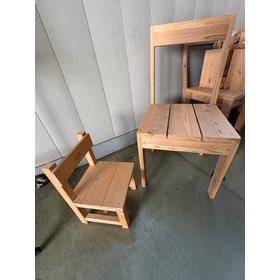Cypress bark roofing, cedar bark roofing, and wooden shingle roofing: Background of the project / Social issues
Inheritance and Rediscovery of Traditional Techniques! Bringing Japan's Ancient Traditional Roofing Methods into New Architecture.
Hinoki bark roofing is a traditional Japanese roofing technique that uses materials shaped from the bark of the hinoki tree. It allows for elegant curves and a sense of weight in the eaves, and is primarily seen in important cultural properties today. Since only the bark is harvested from standing hinoki trees, it is considered an environmentally friendly method; however, the decrease in available hinoki trees, the aging and reduction of craftsmen who harvest the bark (known as motokawashi), and those who process it into products (known as hiwadakoshiraeshi) have made securing materials increasingly difficult. "Hiwadaya Co., Ltd." was incorporated in 1994 and continues the tradition of "hiwadaya," which has been in existence since the Tenpo era (1830s). The representative, Masashi Sasaki, is the only hinoki bark roofer in Yamaguchi Prefecture. Hiwadaya Co., Ltd. will continue to preserve and pass on the unique traditional architectural culture of hinoki bark roofing in Japan. [Mainly used products] ○ Nagahira (long flat) 2 shaku 5 sun → Approximately 75 cm in total length, with 120 pieces (1 bundle) shaped into a trapezoid. ○ Skilled craftsmen produce 1 to 2 bundles per day. → Each product requires 10 kg to 15 kg of bark. ○ About 2,000 bundles of this product were used in the Ryufukuji construction project in Yamaguchi City, Yamaguchi Prefecture. For more details, please contact us or download the catalog.
Inquire About This Product
basic information
【Process Leading to Hinoki Bark Roofing Work】 ○ Collection → The raw bark master collects bark from hinoki trees that are over 80 years old. → The amount of bark obtained from one tree is approximately 20kg to 30kg. ○ Processing → The hinoki bark processor uses a special knife to process the bark. → The bark is evenly peeled and trimmed (washing the bark). → It is shaped into the specified form (shaping). → The pieces are bundled together in the required quantity. ○ Construction → The hinoki bark roofer uses it for roofing work. → About two tatami mats worth is installed in a day, using 14 bundles of the product. ● For more details, please contact us or download the catalog.
Price information
Please contact us.
Delivery Time
※Please contact us.
Applications/Examples of results
For more details, please contact us or download the catalog.
Company information
Hiwadaya Co., Ltd. was incorporated in 1994 and continues the tradition of "Hiwadaya," which dates back to the Tenpo era (1830s). The representative, Masashi Sasaki, is one of the few hinoki bark roofers in the country. Hinoki bark roofing is a construction method where materials made from the bark of hinoki (Japanese cypress) are fastened using bamboo nails, with examples including the Kyoto Imperial Palace, Kiyomizu Temple, and Itsukushima Shrine. We carry out roofing work using traditional Japanese techniques such as hinoki bark, kakibuki (kokerabuki), cedar bark, thatch, and copper roofing, honed through experience in temples and shrines. We receive numerous repair requests for properties with a focus on sukiya architecture and garden gates from all over the country. We are available for nationwide travel and will respond promptly to specific project estimates. Please feel free to contact us! We also recommend our custom-made high-end interior panel material "kasane," made from hinoki bark, for special customers. http://ka-sa-ne.com/







